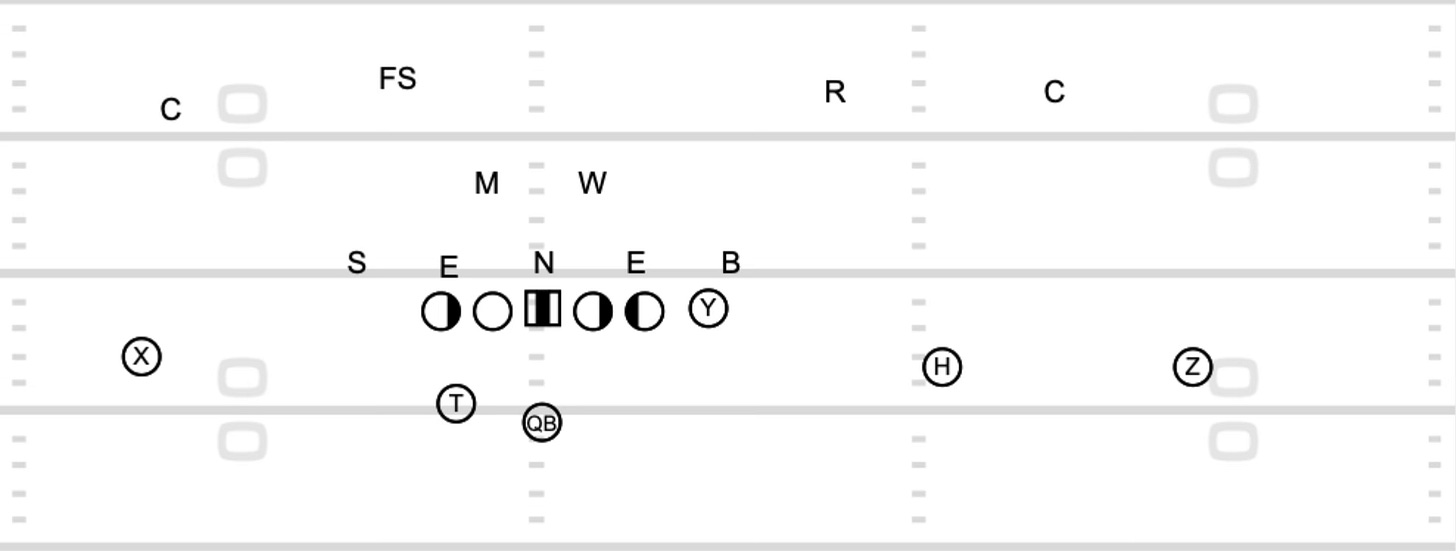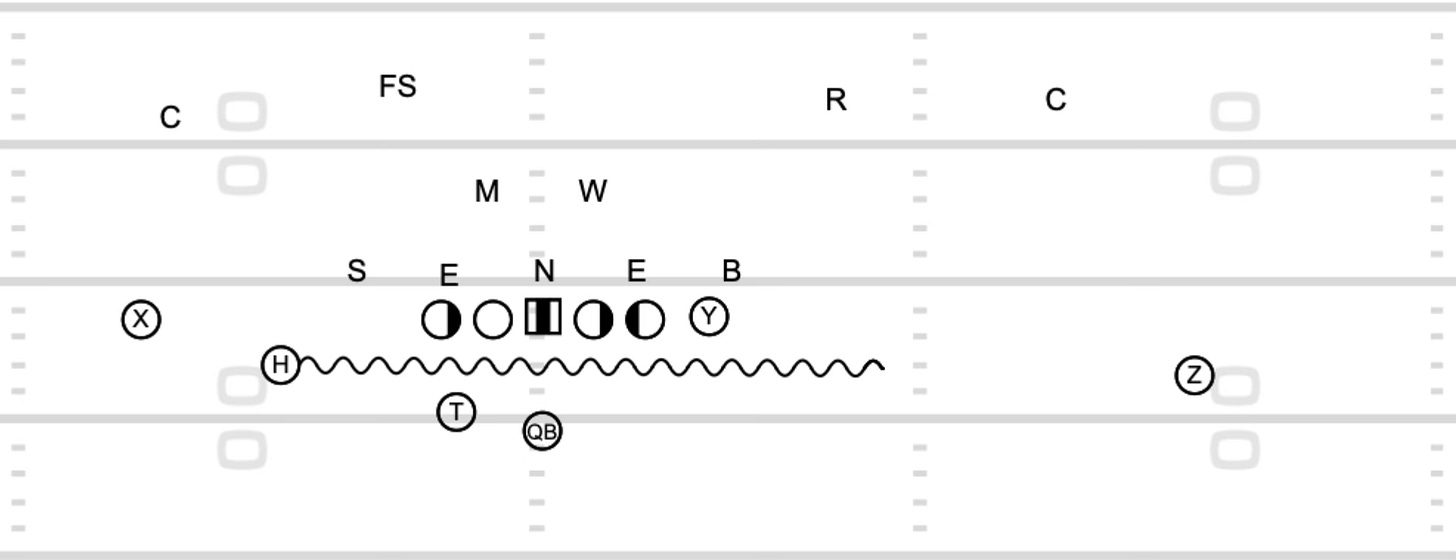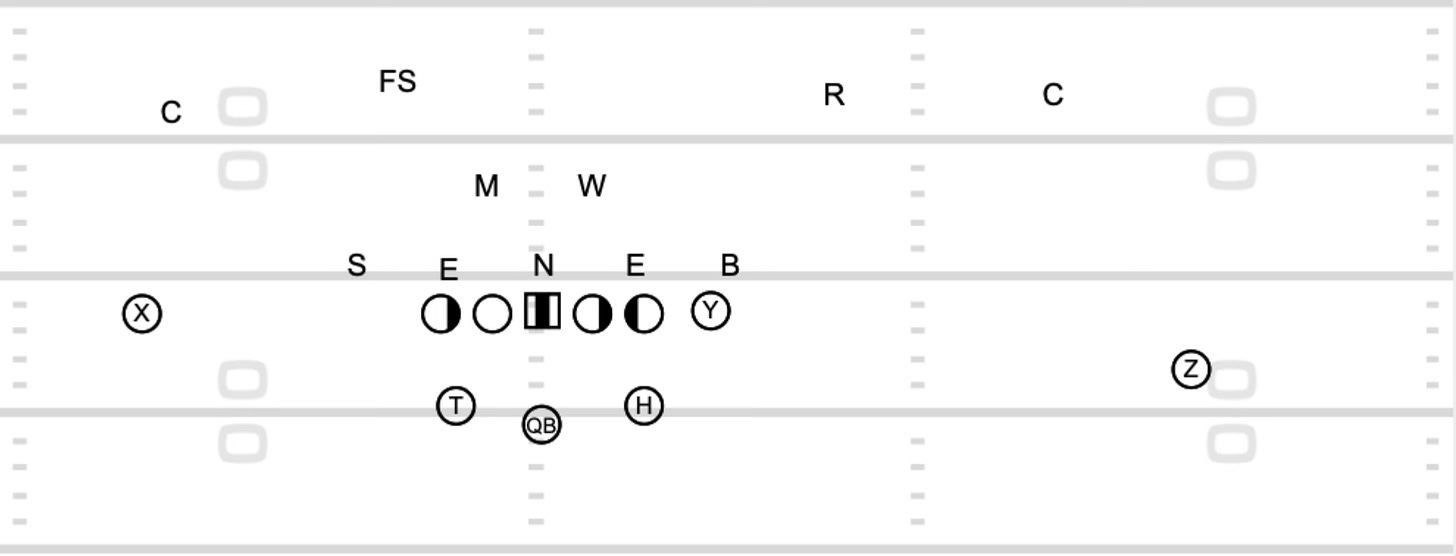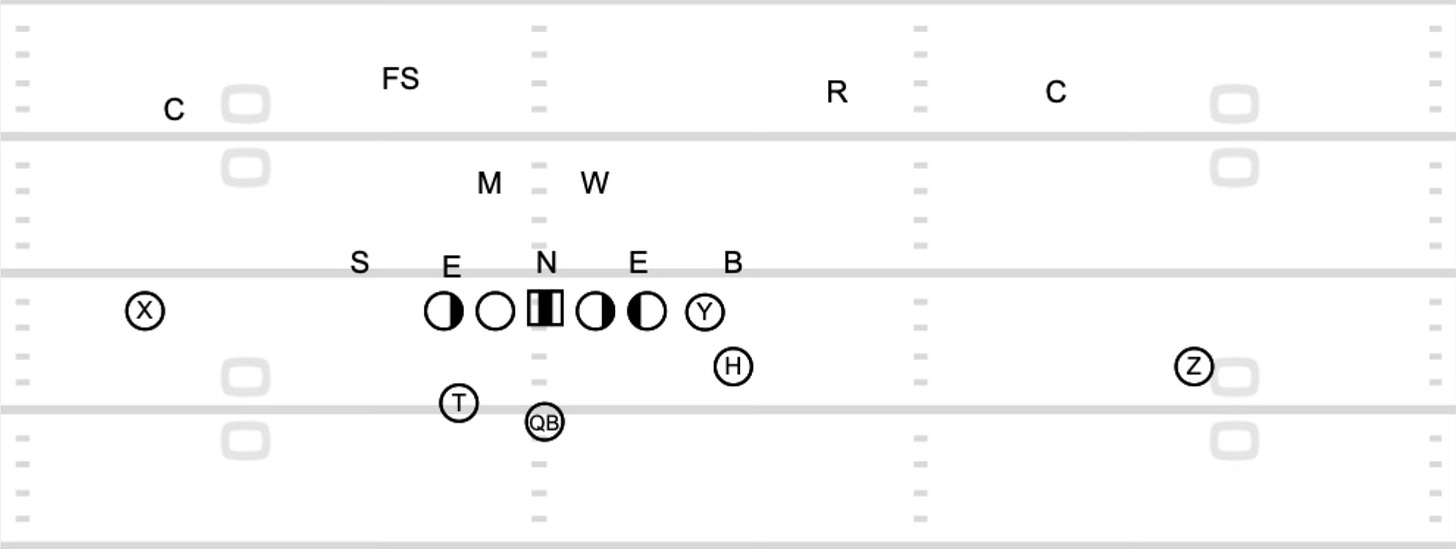Inside Our System-Over-Scheme Approach: What Makes It Work
Building Complexity for the Defense While Keeping It Simple for Us
Here’s a simple truth we’ve learned about running an offense at the high school level:
The teams that win consistently don’t win by trying to out-scheme people. They out-system them.
In our program, we don’t chase trendy plays. We don’t reinvent the wheel each week.
Instead, we follow one repeatable system built around:
A few core plays
Core formations with personnel groupings and motions
Pre-scripted situational calls
The result is consistency, fewer breakdowns, and a team that plays faster and more confident on Friday nights.
Let me break down how we do it, piece by piece, so you can adapt it to fit your program.
The System Approach at a Glance
Quick framework for our offense, but works for any:
Core Plays: Wide Zone + Quick Screen or RPO Quick game, Screen and Go, Choice, and Boot
Weekly Prep: Script our best plays vs anticipated defense plus situational.
Now we have fewer reps wasted installing new concepts each week. More time is spent repping what win, and players learn roles once and get better each week
Most coaches try to do too much. Our system keeps things repeatable so players can play fast without thinking.
Element 1: Core Play Consistency
We rep 4–5 core plays until our guys can run them in their sleep. But it’s not random. It’s a purpose-built sequence.
Here’s how we structure it:
Wide Zone: This is our foundation.
Screens + Quick Game: Perimeter answers when defenses overcommits to the box.
Boot: Punishes linebackers and safeties who trigger downhill too fast.
Screen-and-Go + Choice Routes: Vertical shots when defenses start jumping quick game or screens or we have 1 on 1 matchups.
It’s not about having a big menu, it’s about having a clean if/then flow:
If they load the box → Screen or Quick.
If they chase lateral → Boot.
If they squat on screens or play man → Go over the top.
We don’t try to have five answers for every defensive reaction. That’s where a lot of coaches get stuck.
Too many answers becomes no answer.
We call it the paradox of choice: give yourself too many options and you’ll hesitate calling plays.
Our rule:
Have 1 answer for every anticipated coverage/front, but no more than that.
Element 2: Scripted Situational Calls
We don’t wait until Friday to decide what we’re calling on 3rd and long or in the red zone.
Our call sheet includes:
3rd down packages
2nd and long
Short-yardage
Red zone and goal line calls
2 point plays
2 minute
4 minute
Backed up
We rep these all week. By the time Friday hits, nobody is guessing.
Benefits we see:
Faster play-calling
Fewer wasted timeouts
Players already know what’s coming
You don’t need to out-think yourself mid-game. Trust what you’ve practiced.
Element 3: Core Formation + Multiple Personnel
What we do:
Let’s say this week we are playing a balanced 3-4. So our goal is to stress them by giving them more 3x1 looks.
We’ll start with 11 Personnel 3x1
Then we build off it:
11 personnel: Motion the Slot to 3x1
21 personnel: same 3x1 structure
12 personnel: Both TEs aligned on the same side to create 3x1
We’re creating the same core alignment rules for the offense, but it’s giving the defense a completely different look.
The defense has 4 different “formations” to deal with, but nothing changes up front. We’re just changing the alignment of one person. Most of the time, it’s going to be a different player, so no one has new learning.
These are just a few examples. You can motion Z and the running back to create many more looks.
This is the easy way to create the illusion of complexity.
(This is just one example of our favorite formation set for that week. We will carry 2 or 3 different sets each week set up the same way.)
What Most People Miss
Three things coaches underestimate:
Staying patient when things don’t hit early.
Most bail on their system after one bad series. We trust the process.Repping situational football every week.
If your players panic on 3rd and 8, that’s on you.Run too many unrelated formations, confusing their own kids
Complexity slows down players. Structure speeds them up.
Use This Yourself
Here’s a simple framework you can plug into your own program:
Choose Your Core 4–5 Concepts.
Think one base run, one play-action, one quick game, one screen, and one verticalLock in a few Base Formations.
Don’t overcomplicate. Focus on alignment. Then build small tweaks to allow you to appear multiple with keeping your structure intact.Build a Weekly Script and Situational Sheet.
Script every situation you can think of. Have a specific plan so there’s no doubt what you’re calling.
The most valuable lesson we’ve learned:
It’s not about having the biggest call sheet. It’s about running what your players can own and rep over and over until Friday night feels like just another practice.







